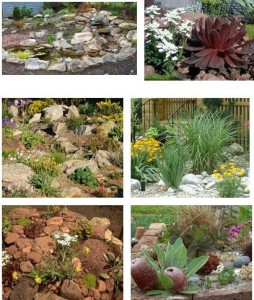Some Useful Design Ideas For Your Garden
The planning and placement of plants in your garden is known as garden designing. Of course, its scope can vary from a simple vegetable garden to the huge complicated schemes that you can see lovingly created by a professional landscaper. However there is more than one way to design a garden. In fact external factors like how much room you have, what kind of plants you want to grow and your preferences will influence it.

When designing your garden, colour is something you should consider very early on. It’s relevant even if you are planting a vegetable garden to provide healthy and nutritious food. A nice looking vegetable garden makes the food look good as well, especially important if you’re trying to encourage youngsters to eat their greens. But of course, colours are even more important when you want to plant some flowers.
When it comes to flowers and plants not only are there a lot of different colors, there are also lots of different shades for each colour. For any person who is familiar with roses, you’ll be well aware of exactly just how many different pinks and reds there are. A new garden is best started out with just two or three main colours – don’t be tempted to start out with more. This way you can keep it controlled and choose colors that will actually compliment each other rather than ending up with some nightmare colour explosion.
If you decide on other features perhaps such as a rock garden in your design; you will be adding a more demanding element to the mix. You don’t need to be any sort of professional though so don’t be put off. It is not that difficult; it involves placing the rocks in locations where they will create the look you want. A rock garden will normally thrive in dry soil; maybe on rugged terrain in a hilly area. Look for larger rocks that have a weathered appearance, which gives your rock garden a natural and wild look. There will be considerable work when you figure that the majority of the rock will be underground; be prepared for some shoveling.
Select plants that will add colour to your garden and of course the varieties that will thrive in your particular area.
Gardens can be designed for almost any space, including non-traditional ones if you have limited space or any unused area to improve its appearance. Think of planting trees or colorful flowers next to your driveway, for example. Maybe you can plant something by the sidewalk outside your home if there is space between it and the street. Any type of path on your property could be made more attractive by placing flowers next to it.
This doesn’t replace your main garden, but it can improve the environment of your property and home. Spend time looking around to find creative areas to plant something. After you have been gardening for awhile, you will realize how rewarding it can be to design your own ultimate garden.
Gardening design is not that difficult, but it does require you to come up with a blueprint, just as though you were building a house or other structure. Remember, though, that plants are living things, so you have to remember their biological needs as well as how they’ll look.